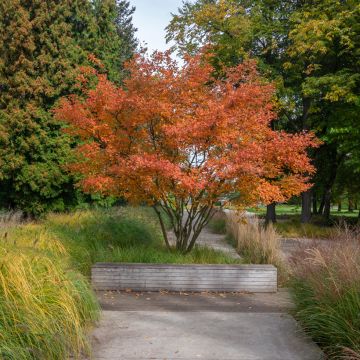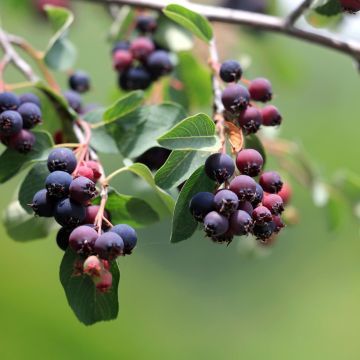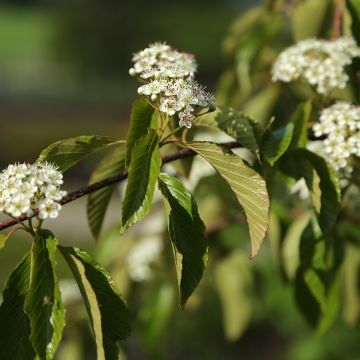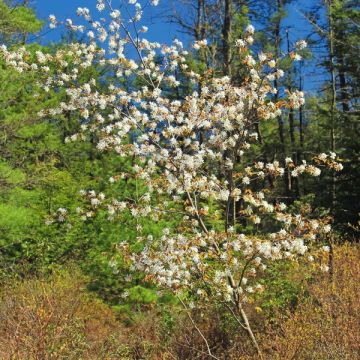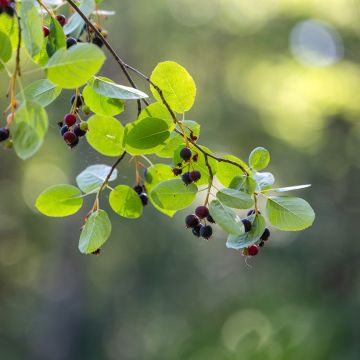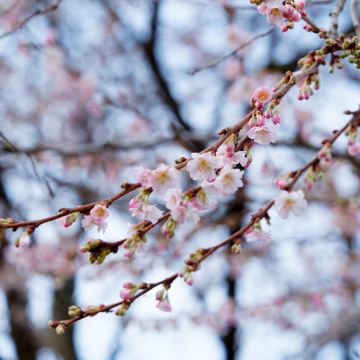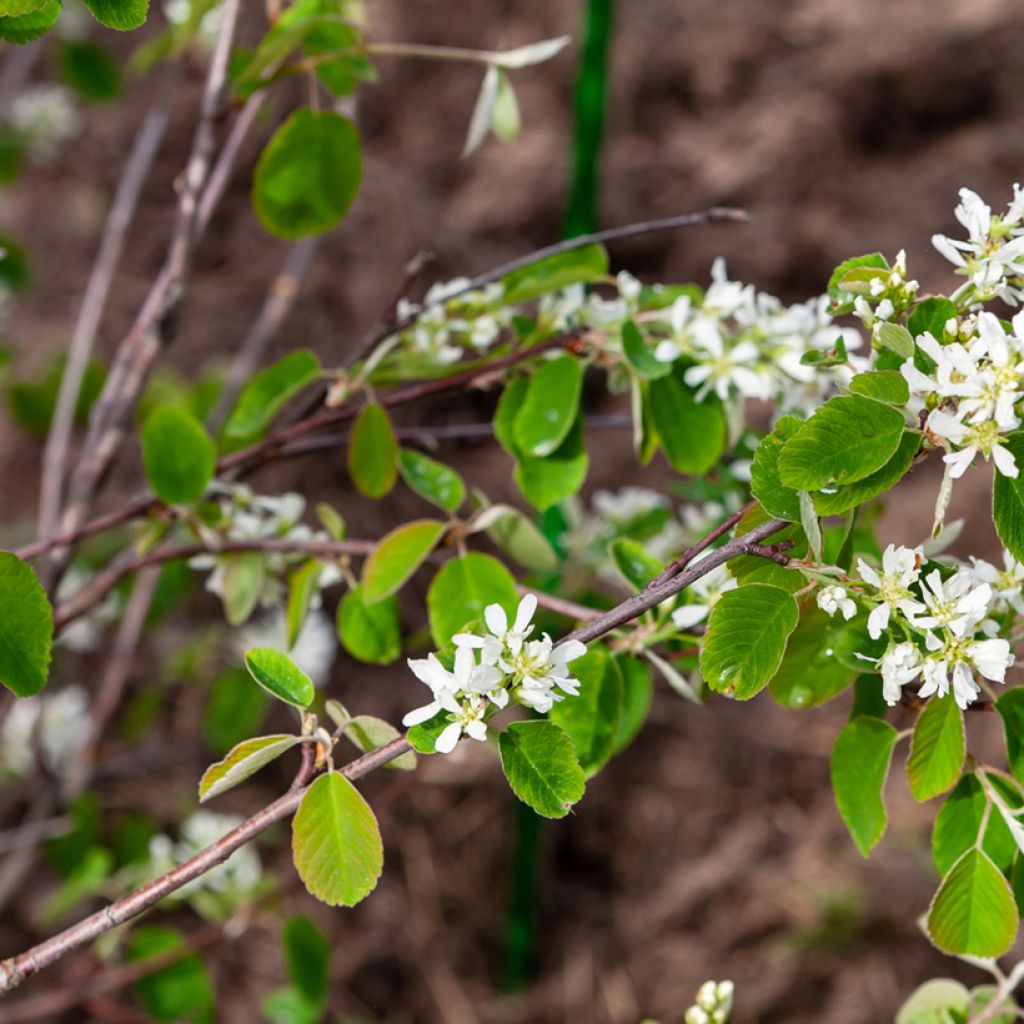

Amelanchier alnifolia Thiessen


Amelanchier alnifolia Thiessen
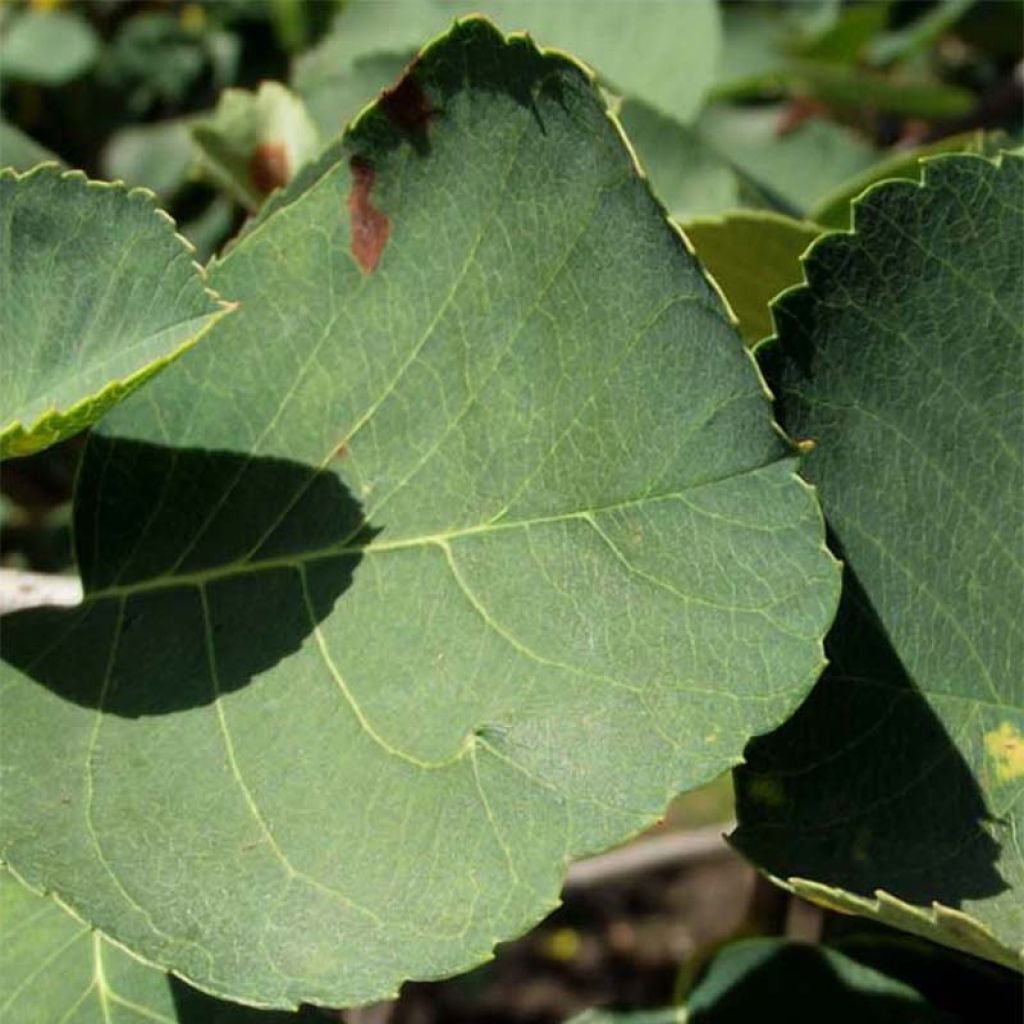

Amelanchier alnifolia Thiessen


Amelanchier alnifolia Thiessen
Amelanchier alnifolia Thiessen
Amelanchier alnifolia Thiessen
Saskatoon, Pacific serviceberry, Western serviceberry, Alder-leaf shadbush, Dwarf shadbush, Chuckley pear, Western juneberry
I ordered this bush on March 31, 2021. I received a healthy young plant that grew well, but... when I wanted to show it to a friend who was advising me to plant one, he informed me that I didn't have a serviceberry but a cotoneaster!!! Even though my cotoneaster is very beautiful, I admit I'm very upset and disappointed not to have a serviceberry!!! Is there a solution?
Marianne, 28/09/2025
Special offer!
Receive a €20 voucher for any order over €90 (excluding delivery costs, credit notes, and plastic-free options)!
1- Add your favorite plants to your cart.
2- Once you have reached €90, confirm your order (you can even choose the delivery date!).
3- As soon as your order is shipped, you will receive an email containing your voucher code, valid for 3 months (90 days).
Your voucher is unique and can only be used once, for any order with a minimum value of €20, excluding delivery costs.
Can be combined with other current offers, non-divisible and non-refundable.
Why not try an alternative variety in stock?
View all →This plant carries a 24 months recovery warranty
More information
We guarantee the quality of our plants for a full growing cycle, and will replace at our expense any plant that fails to recover under normal climatic and planting conditions.
Would this plant suit my garden?
Set up your Plantfit profile →
Description
'Amelanchier 'Thiessen' is a variety of serviceberry with alder-like leaves, both productive and ornamental, selected for its early, delicious and abundant fruiting. This fruit bush produces white spring flowering from a young age that is so abundant it almost covers its branches. Then come the leaves with a pretty bluish green colour and finally, in early summer, the clusters of blackish-blue, juicy, sweet and aromatic fruits, both tasty and rich in vitamins. Amelanchiers are easy-to-grow and highly rewarding shrubs or small trees. 'Thiessen' is no exception to the rule; it makes an excellent informal, bocage or country hedge. Its rather narrow habit is perfectly suited to small gardens.
Native to North America, Amelanchier alnifolia is a robust shrub of the large Rosaceae family, spared by most parasites and resistant to extreme cold. In nature it can be found along watercourses as well as in much less favorable environments, such as wind-exposed rocky slopes. It is a plant that prefers rather acidic and moist soil, but it is adaptable and can withstand relatively dry and hot summers once established. This A. alnifolia species is one of the few in the genus that can tolerate reasonably calcareous soils. To obtain a good harvest, it is advisable to provide it with fairly fertile soil and water if necessary.
The cultivar 'Thiessen', discovered in the wild, was selected for its productivity, fruit quality and abundant flowering. It has a bushy, upright and rather narrow habit, with branches concentrated around the main branches. It has a rather slow growth and reaches about 5m (16 ft) in height and 2m (7 ft) in width when mature. Flowering is remarkably abundant in April-May, at the tips of young branches that will be bare or already adorned with very young leaves, depending on the climate. Flowering and fruiting are rapid in this amelanchier. The 5-petaled white flowers with yellow stamens, 2cm (0.8 in) in diameter, are gathered in clusters along the branches. They are followed by edible fruits the size of a blueberry, globose, called pyridions. They are initially deep blue and then turn black when ripe, in June. Their pleasantly sweet and aromatic flavour and juicy pulp make them suitable for eating fresh or cooked, in jam or jelly.
The young spring leaves are very downy, becoming tougher later on. They have a pretty bluish-green colour and turn yellow in autumn before falling. Measuring up to 5cm (2 in) in length, they are oval-shaped, toothed at the edges, and arranged alternately on the branches. This 'Thiessen' variety resists powdery mildew well. A single plant is sufficient to obtain a harvest of up to 7-8kg of fruits: enough to make numerous jars of nutritious jam for the winter.
Amelanchier 'Thiessen' is a robust fruit bush that is as undemanding as it is charming, with a small footprint, and deserves a place in an informal, rustic or fruiting hedge. It is also used as a backdrop for perennial flower beds. It pairs perfectly with ornamental apple and cherry trees, deciduous euonymus, Japanese quince, spring spireas, hawthorns, loquat, plum trees, and many others. Create a fruit hedge by combining it, for example, with the honeyberry (Lonicera kamtschatica Sweet Myberry), garden blackberries, currants, gooseberries, cranberries (Vaccinium macrocarpon), blueberries, raspberries, Aronia, Japanese silverberry, black elderberry, and more.
Report an error about the product description
Amelanchier alnifolia Thiessen in pictures






Plant habit
Flowering
Foliage
Botanical data
Amelanchier
alnifolia
Thiessen
Rosaceae
Saskatoon, Pacific serviceberry, Western serviceberry, Alder-leaf shadbush, Dwarf shadbush, Chuckley pear, Western juneberry
Cultivar or hybrid
Other Saskatoon - Juneberry
View all →Planting and care
Amelanchier Thiessen is planted in spring or autumn in any good, well-drained garden soil, slightly dry, moist or slightly moist, deep, in sun or partial shade. It prefers slightly acidic to neutral soils but can tolerate some limestone. Water and mulch to maintain soil moisture. This bush, which does not like overly arid conditions, can however withstand moderate summer drought once well established. Water regularly to help it establish, especially during the first two dry summers. Mulch the soil to maintain some freshness, always after watering your amelanchier abundantly so that its roots do not develop only at the surface, which would make it more susceptible to water shortage.
Every spring, apply well-rotted compost around the base of your bush.
You can prune the bush from the first year to promote branching. Beware of powdery mildew! Spray a sulphur-based fungicide as a preventive measure if the spring is mild and very humid.
Planting period
Intended location
Care
-
, onOrder confirmed
Reply from on Promesse de fleurs
Similar products
Haven't found what you were looking for?
Hardiness is the lowest winter temperature a plant can endure without suffering serious damage or even dying. However, hardiness is affected by location (a sheltered area, such as a patio), protection (winter cover) and soil type (hardiness is improved by well-drained soil).

Photo Sharing Terms & Conditions
In order to encourage gardeners to interact and share their experiences, Promesse de fleurs offers various media enabling content to be uploaded onto its Site - in particular via the ‘Photo sharing’ module.
The User agrees to refrain from:
- Posting any content that is illegal, prejudicial, insulting, racist, inciteful to hatred, revisionist, contrary to public decency, that infringes on privacy or on the privacy rights of third parties, in particular the publicity rights of persons and goods, intellectual property rights, or the right to privacy.
- Submitting content on behalf of a third party;
- Impersonate the identity of a third party and/or publish any personal information about a third party;
In general, the User undertakes to refrain from any unethical behaviour.
All Content (in particular text, comments, files, images, photos, videos, creative works, etc.), which may be subject to property or intellectual property rights, image or other private rights, shall remain the property of the User, subject to the limited rights granted by the terms of the licence granted by Promesse de fleurs as stated below. Users are at liberty to publish or not to publish such Content on the Site, notably via the ‘Photo Sharing’ facility, and accept that this Content shall be made public and freely accessible, notably on the Internet.
Users further acknowledge, undertake to have ,and guarantee that they hold all necessary rights and permissions to publish such material on the Site, in particular with regard to the legislation in force pertaining to any privacy, property, intellectual property, image, or contractual rights, or rights of any other nature. By publishing such Content on the Site, Users acknowledge accepting full liability as publishers of the Content within the meaning of the law, and grant Promesse de fleurs, free of charge, an inclusive, worldwide licence for the said Content for the entire duration of its publication, including all reproduction, representation, up/downloading, displaying, performing, transmission, and storage rights.
Users also grant permission for their name to be linked to the Content and accept that this link may not always be made available.
By engaging in posting material, Users consent to their Content becoming automatically accessible on the Internet, in particular on other sites and/or blogs and/or web pages of the Promesse de fleurs site, including in particular social pages and the Promesse de fleurs catalogue.
Users may secure the removal of entrusted content free of charge by issuing a simple request via our contact form.
The flowering period indicated on our website applies to countries and regions located in USDA zone 8 (France, the United Kingdom, Ireland, the Netherlands, etc.)
It will vary according to where you live:
- In zones 9 to 10 (Italy, Spain, Greece, etc.), flowering will occur about 2 to 4 weeks earlier.
- In zones 6 to 7 (Germany, Poland, Slovenia, and lower mountainous regions), flowering will be delayed by 2 to 3 weeks.
- In zone 5 (Central Europe, Scandinavia), blooming will be delayed by 3 to 5 weeks.
In temperate climates, pruning of spring-flowering shrubs (forsythia, spireas, etc.) should be done just after flowering.
Pruning of summer-flowering shrubs (Indian Lilac, Perovskia, etc.) can be done in winter or spring.
In cold regions as well as with frost-sensitive plants, avoid pruning too early when severe frosts may still occur.
The planting period indicated on our website applies to countries and regions located in USDA zone 8 (France, United Kingdom, Ireland, Netherlands).
It will vary according to where you live:
- In Mediterranean zones (Marseille, Madrid, Milan, etc.), autumn and winter are the best planting periods.
- In continental zones (Strasbourg, Munich, Vienna, etc.), delay planting by 2 to 3 weeks in spring and bring it forward by 2 to 4 weeks in autumn.
- In mountainous regions (the Alps, Pyrenees, Carpathians, etc.), it is best to plant in late spring (May-June) or late summer (August-September).
The harvesting period indicated on our website applies to countries and regions in USDA zone 8 (France, England, Ireland, the Netherlands).
In colder areas (Scandinavia, Poland, Austria...) fruit and vegetable harvests are likely to be delayed by 3-4 weeks.
In warmer areas (Italy, Spain, Greece, etc.), harvesting will probably take place earlier, depending on weather conditions.
The sowing periods indicated on our website apply to countries and regions within USDA Zone 8 (France, UK, Ireland, Netherlands).
In colder areas (Scandinavia, Poland, Austria...), delay any outdoor sowing by 3-4 weeks, or sow under glass.
In warmer climes (Italy, Spain, Greece, etc.), bring outdoor sowing forward by a few weeks.
































